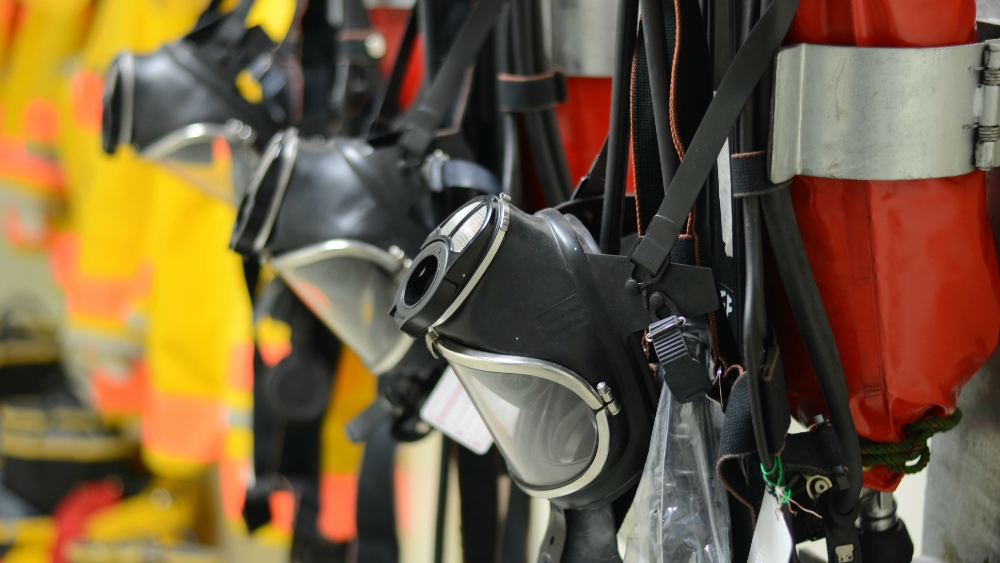8 Differences Between Basic and Advanced Breathing Apparatus Training

When it comes to ensuring safety, the right training can make all the difference. From understanding equipment to mastering emergency scenarios, breathing apparatus training proves crucial for many professionals. But not all training is made equal. Let’s delve into the crucial distinctions between basic and advanced training modules.
1. Purpose and Goal of the Training
Basic: Introducing the Equipment
At the heart of basic training, novices get a friendly handshake with the gear. They’re walked through the foundational steps, acquainting themselves with the tools, and gaining an awareness of potential hazards.
Advanced: Mastery and Preparedness
Advanced training isn’t just about getting familiar—it’s about achieving mastery. Here, trainees tackle complex emergency situations and acquire extensive hands-on experience.
2. Duration and Intensity of the Course
Basic: A Quick Run-Through
Basic training usually lasts for a shorter span, offering foundational insights without overwhelming beginners.
Advanced: An In-depth Journey
Stepping up the ladder, the advanced course demands a more prolonged commitment. It’s intense, detailed, and designed for those hungry for comprehensive skills.
3. Depth of Theoretical Knowledge
Basic: The ABCs
Picture basic training as the kindergarten of breathing apparatus. It covers the general safety measures and principles without diving too deep.
Advanced: A University Degree
Advanced training is like majoring in breathing apparatus at uni. It offers a deep dive into the technical aspects, ensuring trainees understand the nitty-gritty mechanics behind every piece of equipment.
4. Practical Hands-on Experience
Basic: Baby Steps with Support
Beginners get guided practices, like learning to walk with someone holding their hands, ensuring they’re always monitored and safe.
Advanced: Running with Scenarios
In advanced training, it’s not just about walking—it’s about running marathons! Trainees tackle realistic scenarios, partake in mock drills, and engage in advanced simulations to ensure real-world readiness.
5. Safety Protocols
Basic: Safety 101
Basic offers general safety measures. Think of it as the simple do’s and don’ts that everyone should know.
Advanced: Safety Encyclopedia
Advanced training provides a comprehensive look into safety. From detailed checklists to risk assessments, it covers it all.
6. Maintenance and Troubleshooting
Basic: Regular Check-Ups
Much like a regular car check-up, basic training introduces routine maintenance, ensuring everything runs smoothly.
Advanced: The Mechanic’s Handbook
Advanced isn’t just about spotting a problem; it’s about fixing it. Trainees learn the ins and outs of troubleshooting and explore advanced maintenance techniques to ensure longevity and efficiency.
7. Assessment and Certification
Basic: A Graduation Certificate
Upon completing basic training, trainees get a simple assessment. It’s a friendly test to ensure they’ve grasped the fundamentals.
Advanced: The PhD of Breathing Apparatus
Advanced training assessment? Rigorous and demanding! Only those who meet stringent criteria bag this certification, proving their expertise in the field.
8. Trainer Expertise
Basic: Experienced Guides
Basic training is delivered by seasoned trainers who know their stuff but focus on laying down the foundation.
Advanced: The Elite Squad
The advanced level requires more than just experience. Trainers here often have backgrounds in emergency response and extensive field exposure, making them the crème de la crème in the training world.
In Conclusion
Selecting the right training level isn’t just about your current skills; it’s about where you want to be. Whether you’re dipping your toes into the world of breathing apparatus or aiming to become a certified pro, there’s a course tailored for you. And remember, continuous learning and prioritizing safety is the key to mastery.
For those considering an advanced level of training, Vertical Horizonz stands as a leading training institute, ensuring that you get the best guidance on your journey to expertise.
FAQs on Vertical Horizonz Breathing Apparatus Training
How long is the breathing apparatus training at Vertical Horizonz?
The breathing apparatus training course at Vertical Horizonz lasts for a duration of 1 Day.
What is the cost of the breathing apparatus training at Vertical Horizonz?
The training costs $230 per person. It’s an investment in top-notch training from a leading institute.
Under which accreditation or standard is the training conducted?
The training aligns with the MSMWHS216 standards for operating breathing apparatus, ensuring participants get recognized and quality training.
Where is the training held?
The primary location for the training is at 3/94 Delta Street, Geebung, Brisbane. However, if you have a suitable venue, Vertical Horizonz can also conduct training at your preferred location upon request.
Can Vertical Horizonz conduct training at a venue of our choice?
Yes, Vertical Horizonz offers flexibility in training venues. If you have a suitable location and it’s more convenient for your participants, training can be conducted at your specified venue upon request.
-
6 Career Advancements Enabled by Completing a White Card Training Course
November 06, 2023
-
7 Career Opportunities Unlocked by a Working at Heights Certification
October 24, 2023
-
7 High-Paying Jobs You Can Get with a GWO Training Certification
October 20, 2023
-
Top 7 Career Advancements After Completing a High Pressure Water Jetting Course
October 18, 2023
-
5 Essential Techniques Taught in High Pressure Water Jetting Courses
October 18, 2023
-
7 Career Opportunities after Completing Vacuum Loading Training
October 17, 2023







